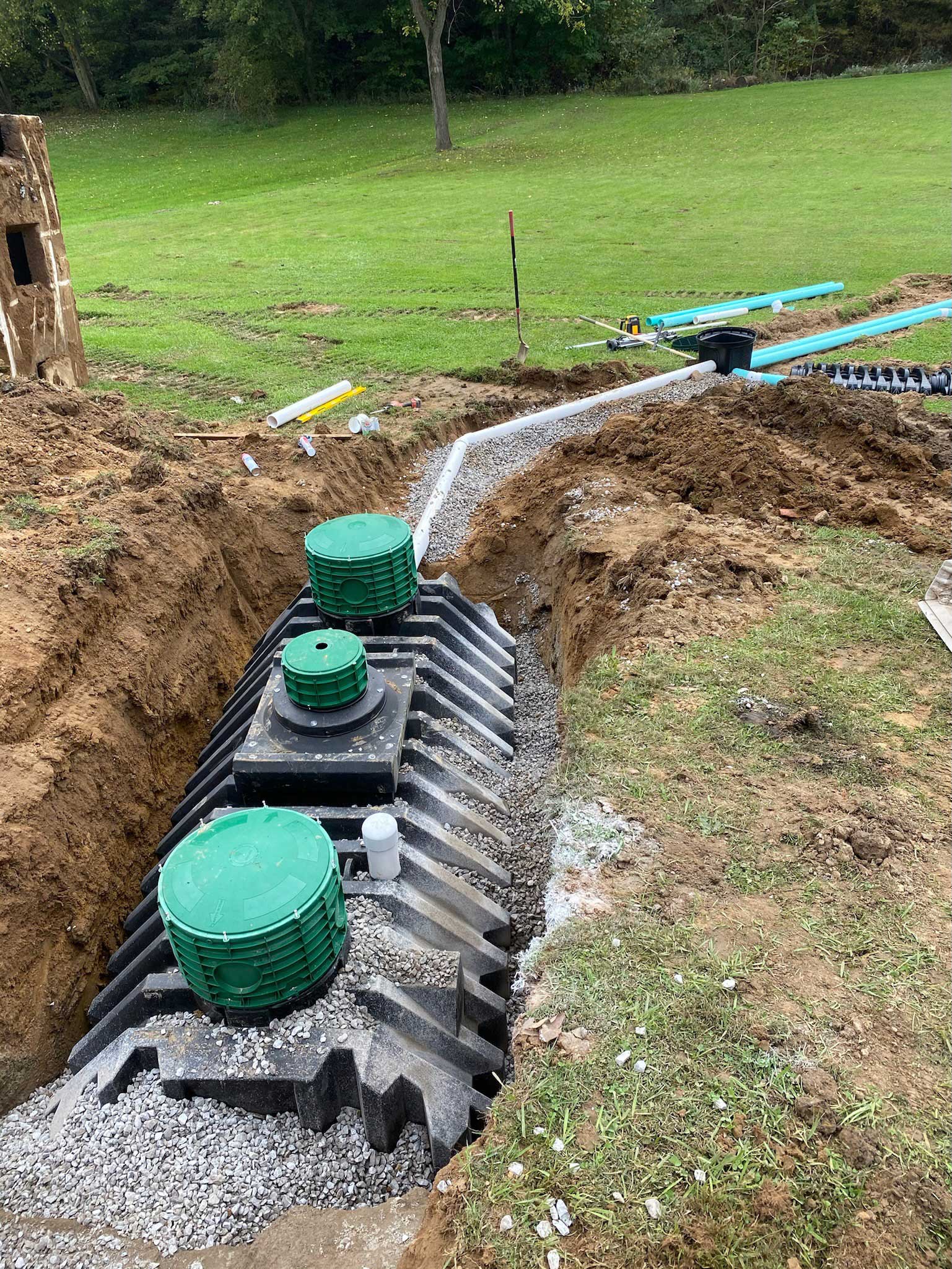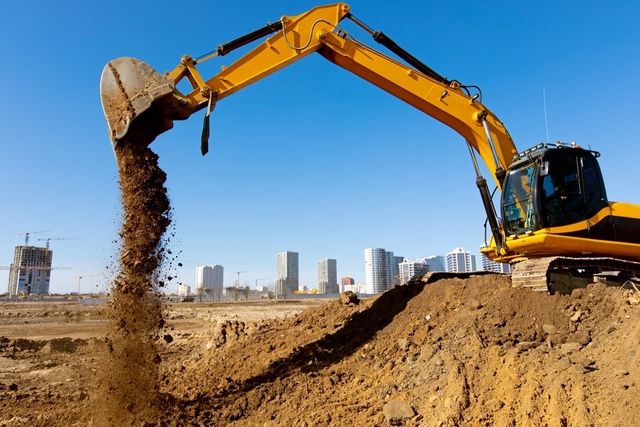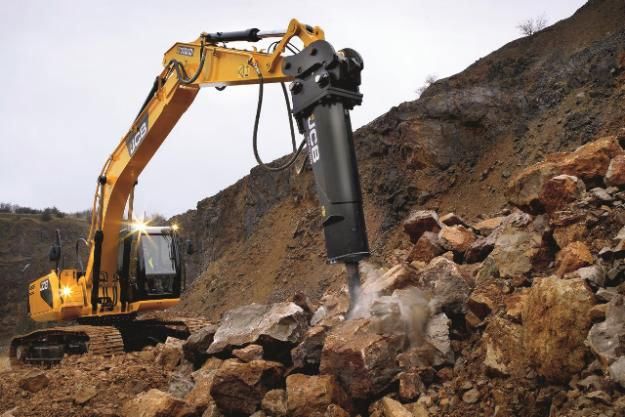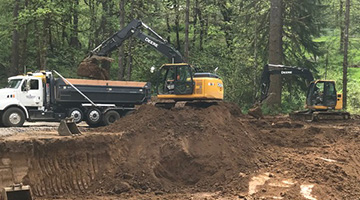Thorough Expedition: The Science Behind Superior Excavation Practices
The realm of excavation practices is a domain where science intertwines with craftsmanship to discover the enigmas concealed beneath the earth's surface. From ancient hand tools to contemporary hydraulic excavators, the development of excavation methods has actually been a testament to human ingenuity and technological innovations. However, what truly sets superior excavation practices apart is a deep understanding of geological principles, combined with the use of innovative devices and techniques. By checking out the science behind these practices, we can reveal the keys that exist under our feet and value the precision and experience that go right into every dig.
Advancement of Excavation Methods
Throughout background, the advancement of excavation methods has played a crucial duty beforehand construction methods and archaeological explorations. From the simple tools made use of by our ancestors to the innovative machinery used in modern times, the development of excavation methods has dramatically changed how we come close to different projects.
In old times, manual work with fundamental devices such as shovels, pickaxes, and wheelbarrows was the main method of excavation. This labor-intensive process restricted the deepness and scope of excavations, typically resulting in slow development and limited access to specific websites. However, as people advanced, so did the tools and methods made use of for excavation.
The Industrial Change marked a turning point in excavation methods with the intro of steam-powered machinery. This innovation reinvented the area, permitting for faster and more comprehensive excavations. In modern times, modern technology plays a crucial role in excavation, with improvements like general practitioner systems, drones, and 3D scanning boosting accuracy and efficiency in the field. The evolution of excavation techniques remains to shape the way we develop, discover, and understand the world around us.
Duty of Modern Technology in Excavation

The assimilation of advanced technology has actually basically transformed the area of excavation, improving accuracy and effectiveness to unprecedented levels - septic ohio. One of the essential technical innovations that has substantially influenced excavation techniques is the utilization of GPS systems.
Moreover, the advent of 3D modeling and simulation software has streamlined the preparation procedure for excavation tasks. Engineers and operators can currently visualize the entire excavation process before damaging ground, recognizing potential challenges and optimizing operations. Along with this, the implementation of drones in excavation activities has actually facilitated aerial surveys, volumetric measurements, and site evaluations with unequaled rate and accuracy.
Geological Concepts in Excavation
An understanding of geological concepts is vital for guaranteeing the architectural integrity and security of excavation sites. Geological elements play an essential role in establishing the expediency and safety of excavation jobs.
Additionally, the geological framework of the area, consisting of faults, fractures, and rock formations, need to be thoroughly analyzed to determine possible dangers and obstacles. Excavating near mistake lines or unpredictable rock formations can lead to instability and potential dangers. By conducting detailed geological surveys and evaluation, engineers and excavators can develop strategies to alleviate risks and make sure the effective completion of excavation jobs. Inevitably, incorporating geological concepts right into excavation practices is vital for achieving risk-free, reliable, and lasting results.

Latest Tools for Excavation
In the realm of excavation practices, modern technologies in devices have transformed the efficiency and accuracy of excavation procedures. Among the current tools making waves in the market is using drones geared up with advanced imaging technology. These drones can give in-depth aerial surveys of excavation websites, providing real-time data on topography and potential hazards. This details help in much better planning and decision-making throughout the excavation process.
One more excavating ohio cutting-edge device getting appeal is the application of 3D printing technology for developing personalized excavation devices. This permits for the production of specialized devices that are tailored to the details demands of a task, enhancing performance and decreasing downtime.
Additionally, innovations in materials scientific research have caused the growth of stronger and a lot more durable excavation tools. excavating ohio. Tungsten carbide-tipped excavator attachments, for instance, deal superior performance in tough ground problems, enhancing efficiency on-site
Scientific research's Effect on Excavation Practices

In addition, improvements in materials scientific research have led to the development of stronger, extra resilient excavation devices and devices. The use of composite products in shovels and miners has improved their performance and long life, ultimately boosting productivity on excavation sites. In addition, clinical research on soil mechanics and geotechnical design has actually offered beneficial understandings right into soil actions, permitting excavation professionals to make educated choices pertaining to excavation methods and dirt stabilization techniques. Generally, science continues to drive technology and enhancement in excavation practices, making excavation tasks more reliable, economical, and lasting.

Final Thought
To conclude, the evolution of excavation techniques has actually been significantly affected by improvements in innovation and a deeper understanding of geological principles. The latest tools and devices used in excavation have actually enhanced performance and accuracy in the area. The application of scientific expertise has substantially enhanced excavation practices, resulting in extra sustainable and efficient methods for digging deep into various kinds of materials.
In the world of excavation practices, modern innovations in tools have changed the performance and accuracy of excavation procedures. By leveraging clinical principles, the excavation industry has been able to considerably enhance efficiency, accuracy, and safety and security in excavation procedures. GPR enables excavation groups to non-invasively scan and map subsurface frameworks, energies, and prospective risks, allowing them to prepare excavation tasks with better precision and decreased danger of accidents.
Additionally, scientific research on soil auto mechanics and geotechnical design has given beneficial understandings right into soil behavior, permitting excavation professionals to make educated choices concerning excavation approaches and soil stablizing techniques. Generally, scientific research continues to drive innovation and enhancement in excavation methods, making excavation projects much more reliable, cost-efficient, and sustainable.